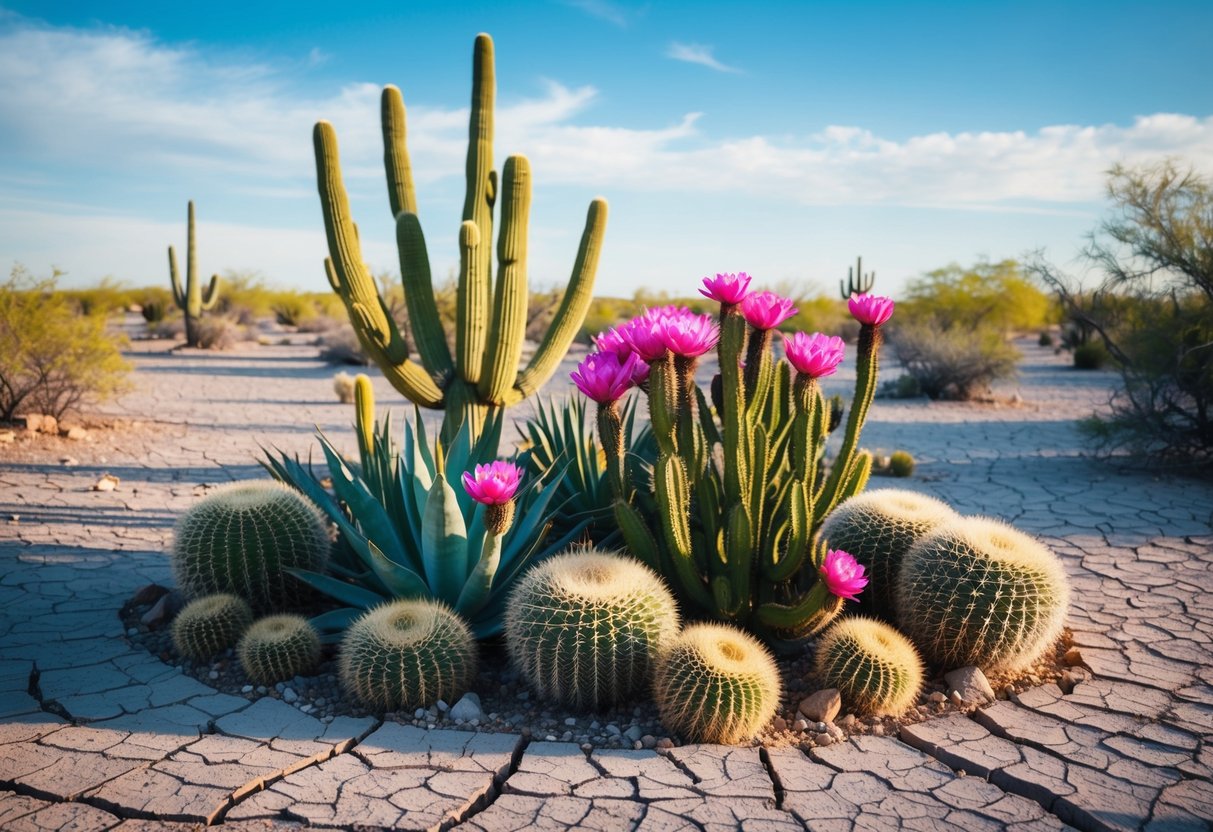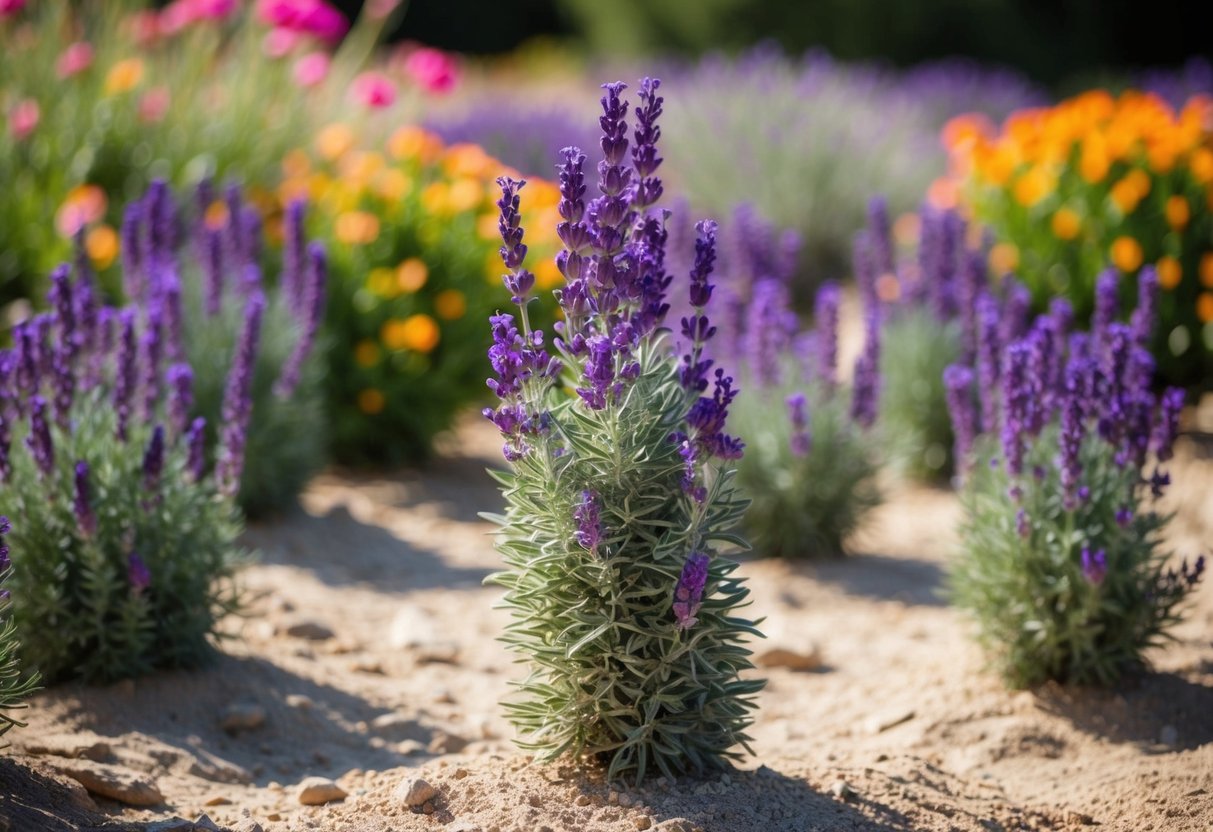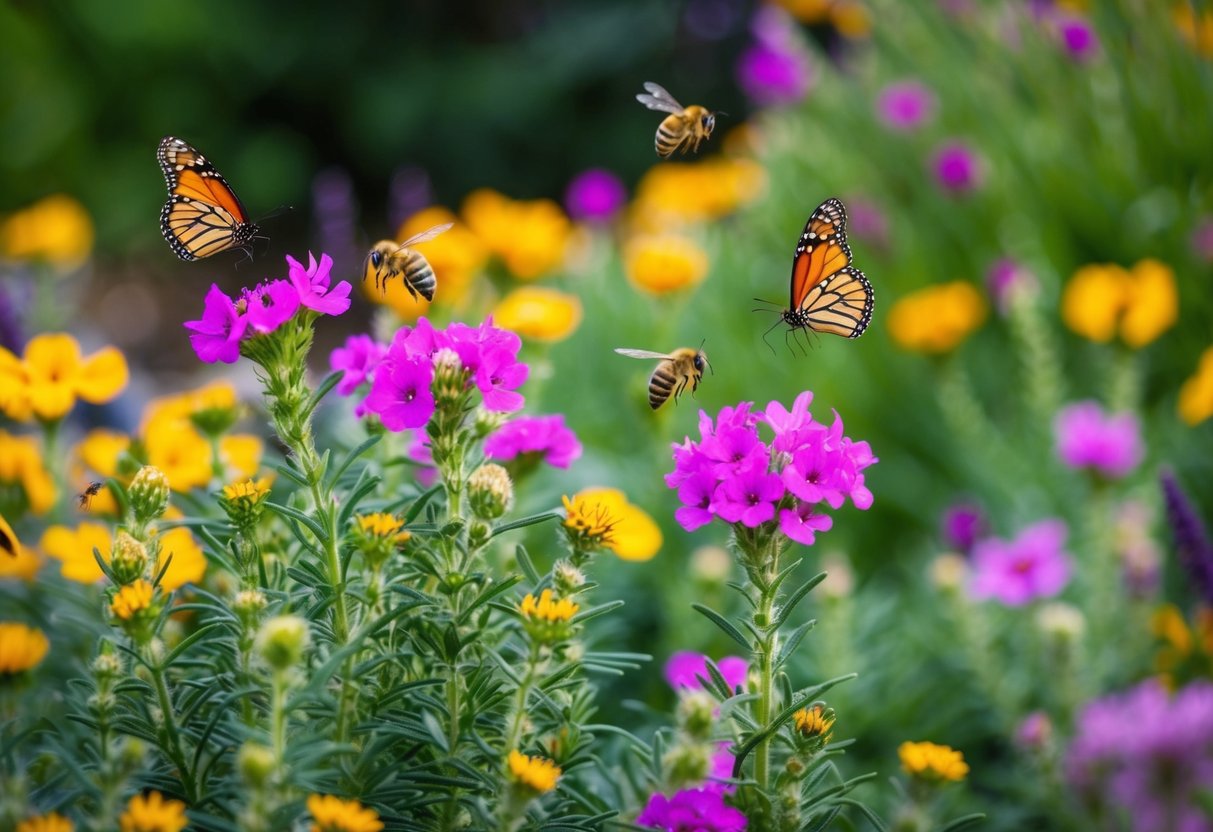What is the Most Drought-Resistant Flower? Discover Hardy Blooms
When it comes to choosing plants for your garden or landscaping, finding ones that can withstand dry conditions is crucial, especially if you live in an area prone to drought. You might wonder which flower is the most drought-resistant, as this can save you time and water while keeping your garden vibrant. The most drought-resistant flower is often considered to be lavender, thanks to its ability to thrive in dry and rocky soils while providing a beautiful scent and appearance.

Lavender isn’t the only option for gardeners looking to create a drought-resistant landscape. Many other flowers can also withstand tough conditions and bring color and life to your garden. For instance, varieties like the black-eyed Susan offer bright, sunny blooms and need little water to flourish, making them ideal for water-wise gardening.
Exploring drought-resistant flowers can transform your garden into a low-maintenance paradise. With different species that enjoy the sun and dry conditions, you’ll find plenty of beautiful options to enhance your space without the stress of constant watering. Whether it’s for your home garden or a larger landscaping project, using drought-resistant plants is a smart way to create a sustainable and stunning environment.
Understanding Drought-Resistant Flowers

When it comes to gardening in dry conditions, choosing the right plants can make a big difference. Drought-resistant flowers, like perennials and some annuals, thrive with little water and provide beauty and support for local ecosystems.
Defining Drought Tolerance
Drought tolerance refers to a plant’s ability to survive with minimal water. Plants achieve this through various adaptations. Some have deep roots that access underground water, while others have small or waxy leaves to reduce water loss.
These adaptations mean that even under harsh drought conditions, these plants continue to thrive. Lavender is a good example, known for its ability to withstand dry climates and resilience against heat.
The Importance of Well-Draining Soil
For drought-resistant plants, well-draining soil is crucial. Waterlogged soil can damage roots and lead to poor plant health. You want soil that allows excess water to flow away while retaining moisture around the root zone.
Adding organic matter like compost improves soil structure. This helps with drainage and provides nutrients that support plant growth. In dry climates, well-drained soil is vital for maintaining healthy plants.
Benefits for Ecosystems and Pollinators
Drought-tolerant plants are great for local ecosystems. They help conserve water and reduce the need for constant maintenance. Native plants are often drought-tolerant and support local wildlife.
Pollinators, like bees and butterflies, benefit from these plants. They provide essential pollen and nectar in areas where water is scarce. This supports biodiversity and helps maintain balanced ecosystems. Including these types of plants in your garden can make it a thriving habitat for various life forms.
Top Drought-Resistant Perennials

These perennials thrive in dry conditions, offering vibrant blooms and resilience to drought. Perfect for your garden, they bring beauty with minimal water while resisting pest damage.
Salvia
Salvia is a hardy perennial known for its stunning spikes of flowers. It thrives in full sun and requires little water once established. These plants bloom in shades of blue, purple, red, and pink, attracting hummingbirds and bees. Salvia works well in borders, containers, or mixed flower beds. This drought-tolerant flower can handle the heat of summer without wilting.
What’s more, it’s resistant to deer, making it a low-maintenance choice for gardens in rural areas. With a range of species suited to various USDA zones, you can find one that’s perfect for your local climate.
Yarrow
Yarrow is cherished for its fern-like leaves and clusters of tiny flowers. This perennial comes in several colors like pink, yellow, white, and red. In addition to its beauty, yarrow is known for being extremely drought-tolerant and thriving in hot, dry climates.
It meets the needs of those looking for both beauty and resilience in their garden. Furthermore, yarrow is deer resistant, sparing your garden from unwanted visitors. It’s suitable for many USDA zones, making it a versatile choice for gardeners across different regions.
Sedum
Sedum, also known as stonecrop, is famous for its fleshy leaves and small star-shaped flowers. This perennial is improved by its ability to survive in dry, poor soil. Sedum comes in many varieties, with some being mat-forming ground covers and others being upright specimens that add structure to your garden.
In addition to thriving in full sun, sedums are incredibly low-maintenance, requiring very little care beyond occasional trimming. They show resilience to pests, making them a great choice for a long-lasting garden feature.
Lavender
Lavender is well-loved both for its fragrance and its drought resistance. Once established, it needs minimal watering, thriving in full sun with well-draining soil. Its purple blooms add vibrant color while its scent keeps deer at bay.
It’s perfect for hedges, borders, or even as a standalone plant. With its ability to adapt to different USDA zones, lavender enhances your garden with both beauty and aroma, making it both a practical and sensory delight.
Coneflowers
Coneflowers, or Echinacea purpurea, are a favorite for their bold, daisy-like flowers. They bloom in midsummer and continue well into the fall, providing a long-lasting display. These plants are extremely heat and drought-tolerant and prefer full sun.
Probably one of the easiest perennials to care for, they are also deer resistant. Coneflowers are available in various colors, including pink, orange, and white, adding splashes of color to your garden. Their hardiness across USDA zones makes them a reliable choice for any gardener looking for perennials that endure.
Russian Sage
Russian Sage stands out with its silver-gray foliage and tall spikes of purple flowers. This perennial is known for thriving under the sun and requiring minimal water once established. Perfect for adding height to your garden, it is a favorite among landscapers for its elegant appearance.
With its drought-tolerant nature, Russian Sage can withstand summer heat without issue. It is also deer resistant, making it easy to maintain. Known for its adaptability to various USDA zones, it’s an excellent choice for gardeners looking to minimize their water use while maximizing beauty.
Designing a Drought-Resistant Garden

Creating a garden that can withstand dry conditions involves careful planning and selection of plants. By focusing on native and water-efficient options, you can build a beautiful landscape that requires minimal watering.
Choosing the Right Plants for Your Zone
Understanding your USDA zone is crucial for selecting drought-resistant plants. Choose plants like creeping phlox and pineleaf penstemon that thrive in dry areas. Both these plants are well-suited for zones 3-9.
Consider adding Mediterranean plants like lavandula angustifolia for a touch of elegance. These options are both visually appealing and hardy enough for cottage gardens. When you choose plants that naturally fit your zone, they are more likely to survive harsh conditions with less water.
Incorporating Xeriscaping Principles
Xeriscaping minimizes water use by designing with drought-tolerant landscaping techniques. Replace grass with a rock garden adorned with succulents or perovskia atriplicifolia for vibrant color.
Utilize native plants that are accustomed to local climate patterns. Arrange your garden into zones based on water needs, placing thirstier plants in one area and less needy species in another. This method allows you to concentrate your watering efforts effectively, saving water and time.
Using Mulch and Groundcovers
Mulch plays a significant role in reducing water loss by keeping the soil moist. Layer it around your plants to help them stay hydrated longer. Mulch also suppresses weeds, cutting down on garden maintenance.
Consider using drought-tolerant ground covers like creeping phlox to add a lush layer to your garden. Ground covers limit evaporation and protect the soil. By incorporating these elements, you create a garden that not only conserves water but also thrives in tough conditions.
Attracting Wildlife with Drought-Tolerant Flowers

Bringing wildlife to your garden is easy with the right drought-tolerant flowers. Not only can these flowers withstand dry conditions, but they also attract pollinators like bees and butterflies, as well as birds.
Creating a Haven for Pollinators and Birds
Planting flowers like blanket flower and agastache can create a perfect oasis for pollinators. These plants are loved by bees and butterflies for their bright colors and sweet nectar.
The globe thistle is another excellent choice. Its spiky blue flowers are a feast for bees while being ignored by deer.
Consider butterfly bush for attracting butterflies, as its fragrant blooms are a favorite snack for these beautiful insects. Adding lantana and verbena also provides colorful, nectar-rich flowers that invite a variety of wildlife.
Selections for a Wildlife-Friendly Garden
For a truly wildlife-friendly garden, choose flowering perennials such as baptisia and gaura. These plants not only endure dry conditions but also offer long-lasting blooms throughout the season. The beardtongue is native and popular among hummingbirds due to its tubular flowers.
Don’t forget catmint, which delights bees and neighboring cats alike. Another valuable addition is zinnia, a cheerful flower that attracts not only butterflies but also birds like finches.
By incorporating these plants, you’ll create a vibrant and welcoming environment for various species. Each of these selections offers something unique to the wildlife visiting your garden while thriving in drought conditions.
Care and Maintenance of Drought-Resistant Gardens

Maintaining a drought-resistant garden involves understanding specific watering needs, managing pests, and planning for different seasons. These are key strategies for success.
Watering Guidelines and Techniques
Efficient watering keeps your drought-tolerant perennials healthy. Begin by watering early in the morning to reduce evaporation. This is especially important during long, hot days. Setting up a drip irrigation system can help water perennials like tickseed and daylilies directly at the root, conserving as much as 60-70% of water compared to regular sprinklers.
Mulching is another great method. A 2-3 inch layer of mulch keeps the soil cool and retains moisture, which is wonderful for your flowering shrubs. Avoid overwatering since many of these tough plants prefer drier soil. Let them dry out between watering sessions.
Managing Pests and Diseases
Even drought-tolerant flowers need protection from pests. Regularly check your plants for signs of trouble. Look for discolored leaves or damaged blossoms. Natural methods, like introducing ladybugs for aphid control, can help protect your garden without harsh chemicals.
Garden cleanliness matters too. Remove dead leaves and debris where pests might hide. Companion planting is another method you can try. Growing garlic or marigolds near susceptible plants can deter unwanted insects effectively.
Seasonal Considerations for Perennial Health
Different seasons call for different care. In spring, focus on pruning and dividing your perennials to encourage growth. Come summer, be sure to deadhead blooms like blanket flowers to prolong flowering. As winter approaches, stop fertilizing and allow plants to harden off.
Daylilies and other flowering shrubs are hardy, but a little extra care goes a long way. Adding a layer of mulch before freezing temperatures sets in protects roots from cold damage. For plants that don’t tolerate the chill, consider bringing them indoors or covering them during extreme conditions.
Adjusting your maintenance plan with the seasons ensures that your garden thrives throughout the year.







